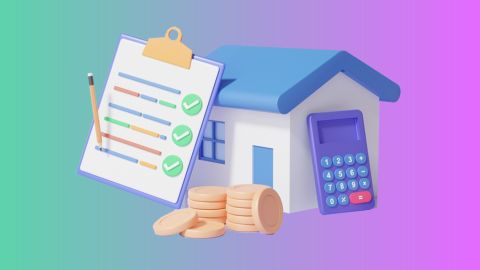In the realm of law and economics, personal property stands as a fundamental concept shaping our daily interactions and financial transactions. Whether it is the phone in your pocket, the car in your garage, or the furniture in your living room, personal property permeates various aspects of our lives. It serves as both a practical asset and a cornerstone of economic activity, underpinning transactions ranging from everyday purchases to complex financial arrangements like loans against property.
A loan against property, a financial product leveraging personal property, extends the utility of assets beyond mere ownership. By using real estate as collateral, individuals unlock substantial funds for diverse purposes, intertwining personal property with significant financial transactions. This illustrates the multifaceted nature of personal property, showcasing its role not only in everyday life but also in facilitating crucial financial endeavours such as property-backed loans.
What is personal property?
Personal property encompasses tangible assets owned by individuals or entities that are movable and not permanently affixed to land or real estate. Unlike real property, which includes land and anything attached to it, personal property can be physically transported and typically holds less intrinsic value over time. This category spans a wide range of items, from everyday possessions like clothing and electronics to investments such as stocks and bonds.
Understanding personal property
To grasp the concept of personal property fully, it is essential to recognise its distinguishing characteristics. Firstly, personal property is movable, meaning it can be transported from one location to another without altering its essential nature. This mobility distinguishes it from real property, which is immovable and permanently attached to land. Secondly, personal property is generally considered to be owned by individuals or entities for personal use, enjoyment, or investment purposes. This broad definition accommodates a diverse array of assets, reflecting the multifaceted nature of personal property in modern society.
Moreover, personal property can be further classified into tangible and intangible forms. Tangible personal property refers to physical assets that can be touched, felt, and seen, such as vehicles, jewellery, and furniture. On the other hand, intangible personal property encompasses assets that lack physical substance but hold significant value, such as patents, copyrights, and trademarks. This distinction underscores the diverse nature of personal property, ranging from the palpable to the abstract.
Personal property and insurance
The concept of personal property intersects significantly with insurance, as individuals seek to protect their assets against various risks and uncertainties. Homeowners insurance, for instance, typically covers personal property within the insured dwelling, shielding against perils like theft, fire, and vandalism. Renters insurance serves a similar function for tenants, safeguarding their belongings in rented accommodations.
Understanding the value of personal property is crucial when determining insurance coverage and assessing premiums. Insurers often require policyholders to provide detailed inventories of their personal possessions, including descriptions, photographs, and estimated values. This information enables insurers to tailor coverage to the specific needs and assets of the policyholder, ensuring adequate protection against potential losses.
In addition to traditional insurance policies, specialised coverage options exist for high-value personal property, such as fine art, jewellery, and collectibles. These policies typically offer broader coverage and higher limits than standard insurance plans, catering to the unique risks associated with valuable assets. Moreover, individuals with extensive personal property holdings may opt for umbrella insurance to supplement existing coverage and enhance financial protection against catastrophic events.
Special considerations
While personal property forms an integral part of our daily lives, certain considerations warrant attention to navigate legal, financial, and logistical complexities effectively. One such consideration pertains to estate planning, where individuals must decide how to distribute their personal assets upon death. By drafting wills, trusts, and other estate planning documents, individuals can ensure that their personal property is transferred according to their wishes, minimising disputes, and facilitating the probate process.
Moreover, the proliferation of digital assets in today's digital age introduces new challenges concerning personal property rights and inheritance. Digital assets, including cryptocurrencies, online accounts, and digital media, pose unique issues related to access, ownership, and transferability. Estate planning strategies must adapt to encompass these digital assets, incorporating provisions for their management and disposition in the event of incapacity or death.
Furthermore, the rise of shared ownership models and collaborative consumption platforms complicates traditional notions of personal property ownership. From ridesharing services to vacation rentals, individuals increasingly access assets on a temporary or shared basis, blurring the lines between ownership and access rights. Legal frameworks and contractual agreements must evolve to address these emerging trends, balancing the interests of multiple stakeholders while preserving individual property rights.
Consider Bajaj Finserv Loan Against Property
Understanding the definitions, examples, and role of personal property is crucial for managing assets effectively. Personal property encompasses movable items like vehicles, jewellery, and electronics, which differ from immovable assets like real estate. Their role in financial planning is significant, as these items can be leveraged for various funding options. Bajaj Finserv Loan Against Property allows you to leverage your existing residential or commercial property to secure significant funding. This loan option offers high loan amounts, competitive interest rates, and flexible repayment terms. With a streamlined application process and the ability to prepay or foreclose with minimal penalties, Bajaj Finserv Loan Against Property helps unlock your property's value and secure the necessary financial resources for personal or business needs.
In the exploration of personal property's multifaceted nature and it is intertwining with significant financial transactions like loans against property, it becomes evident that personal property extends far beyond mere ownership, serving as a cornerstone of economic activity. As individuals navigate the complexities of personal property rights, insurance, and estate planning, leveraging assets like real estate through products such as Bajaj Finserv Loan Against Property emerges as a strategic financial move. With competitive interest rates, a streamlined application process, customised loan solutions, and a hassle-free top-up loan facility, applying for a loan against property with Bajaj Finance becomes a prudent choice, ensuring individuals can unlock the full potential of their personal property for various needs.




